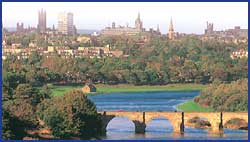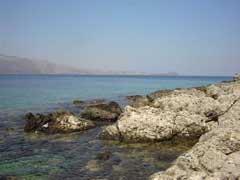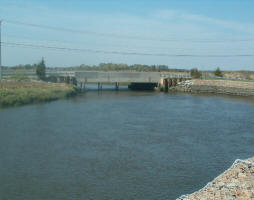 Germany: Demonstrating new domestic waste water management systems
Germany: Demonstrating new domestic waste water management systems
LIFE environment funds have been applied to help increase knowledge about new sanitation technologies that can separate domestic waste elements for reuse as potential fertiliser products and biogas.
European water quality is protected by a variety of different EU policy objectives, including the Water Framework Directive. Waste water management plays an important role in maintaining high levels of water quality and new techniques for improving the overall effectiveness of treating domestic waste water continue to be encouraged by the EU.
LIFE projects have been actively supporting this process and these include a German project that took an innovative approach to sustainable sanitation technology. Led by Kompetenz Zentrum Wasser Berlin GmbH, the LIFE-SCST: Sanitation Concepts for separate Treatment of Urine, Faeces and Greywater (LIFE03 ENV/D/000025) project focused on reusing treated waste water and recycling waste nutrients. Results were intended to improve on the economic and ecological potential of conventional (end-of-pipe) waste water treatment systems and offer useful international demonstration value for low cost water quality management methodologies.
Core project objectives were based on testing the technically feasibility of collecting and separately treating three components of domestic effluent (urine, faeces and grey water). Two different sanitation technologies were installed in toilets at office buildings and apartment blocks. These were vacuum separation toilets and gravity separation toilets.
The different systems were tested to assess their effectiveness and efficiency in separating wastes for reuse. This included collecting and comparing information regarding operational parameters such as design and planning considerations, maintenance requirements and installation and running costs. Consumer acceptance was also factored into the project analysis.
Useful outcomes
The project ran a programme of carefully controlled tests and analysis during a three year period which showed that both new sanitation concepts worked well. Waste elements were able to be separated and this allows a much larger proportion of the nutrients from waste water to be reused, than from conventional water treatment systems.
Waste reuse options from the LIFE project technologies included fertilisers and biogas production. The effectiveness of this nutrient recycling was enhanced by the fact that less carbon gets into the aerobic wastewater treatment and about 50% of this is transformed into CO2 by the micro organisms.
Many useful lessons were learnt about the treatment technologies during the LIFE project which successfully demonstrated that: treatment of grey water using a constructed wetland is very effective but requires a large base area and conventional wastewater treatment plants should be used for grey water treatment in large settlements; grey water treatment with a membrane bio-reactor was equally effective and leads to disinfection of the effluent; the faeces separator works for small settlements and large deposits require a continuously working settlement; and the effectiveness of the urine treatment processes can be enhanced by using ozone to remove pharmaceutical residues.
Overall findings from users, consumers and farmers regarding the innovative sanitation system were encouraging. However, the presence of pharmaceutical residues in some of the recycled nutrients was still considered a problem, since the nutrients could not fully comply with safety standards. This issue and a number of other operational issues lead the LIFE project team to conclude that, whilst these new approaches offer strong potential, more work still needs to be carried out to fine tune the technology and ensure its optimum effectiveness.
More information about the LIFE-SCST project and its ongoing objectives can be found on the project website.
"SCST: Sanitation Concepts for Separate Treatment "
LIFE03 ENV/D/000025
| Contact information | n/a |
|---|---|
| News type | Inbrief |
| File link |
http://ec.europa.eu/environment/life/themes/water/features2009/scst.htm |
| Source of information | EC DG Environment - LIFE+ |
| Keyword(s) | EU-LIFE, domestic wastewater management |
| Subject(s) | ANALYSIS AND TESTS , CHARACTERISTICAL PARAMETERS OF WATERS AND SLUDGES , DRINKING WATER , DRINKING WATER AND SANITATION : COMMON PROCESSES OF PURIFICATION AND TREATMENT , ENERGY , INFRASTRUCTURES , MEASUREMENTS AND INSTRUMENTATION , PREVENTION AND NUISANCES POLLUTION , SANITATION -STRICT PURIFICATION PROCESSES , SLUDGES , WATER QUALITY |
| Relation | http://www.kompetenz-wasser.de/SCST.22.0.html?&L=1 |
| Geographical coverage | Germany |
| News date | 30/04/2009 |
| Working language(s) | ENGLISH |
 you are not logged in
you are not logged in





